I’ll start this post with a confession: I usually hate running races where drafting, above driver skill, is a major factor. It’s stressful. It’s frustrating. And in general, it favors the bold driver over the conservative one, which I consider myself.
For those reasons, I tend to avoid running at draft-heavy tracks if I can help it. Chief among those are NASCAR’s ultimate draft lottery races at Daytona and Talladega.
But recently, in an effort to boost my safety rating after a few incident-filled races, I decided to rekindle my relationship with my first favorite car in iRacing — the widely hated front-wheel-drive fixed-setup diesel Volkswagen Jetta TDI — and it happened to be running at the draft-dependent cathedral of speed in Monza, Italy.
In my first few races, the draft didn’t matter. The small Jetta fields, widely varying in talent, tended to spread out quickly. However, one late-night race was different. The Jetta grid was only three-cars strong, but the polesitter was an Aussie who had turned the fastest qualifying lap thus far that week.
How could I ever keep up with a Jetta alien for an entire 25-minute race? Simple: By turning an old foe — the draft — into a new friend.
To explain the Sun Tzu reference in the title of this post, realize that a draft race is a battle. Speed gives way to strategy, but strategy begets speed. A successful strike comes neither too early nor too late. And at the end, there can be only one winner.
I’ll belabor this comparison as the post continues, so humor me and read on as I break down the main steps I used in my draft battle against a worthy opponent, and how you could use the same basic strategy to win your’s.
Know Your Enemy
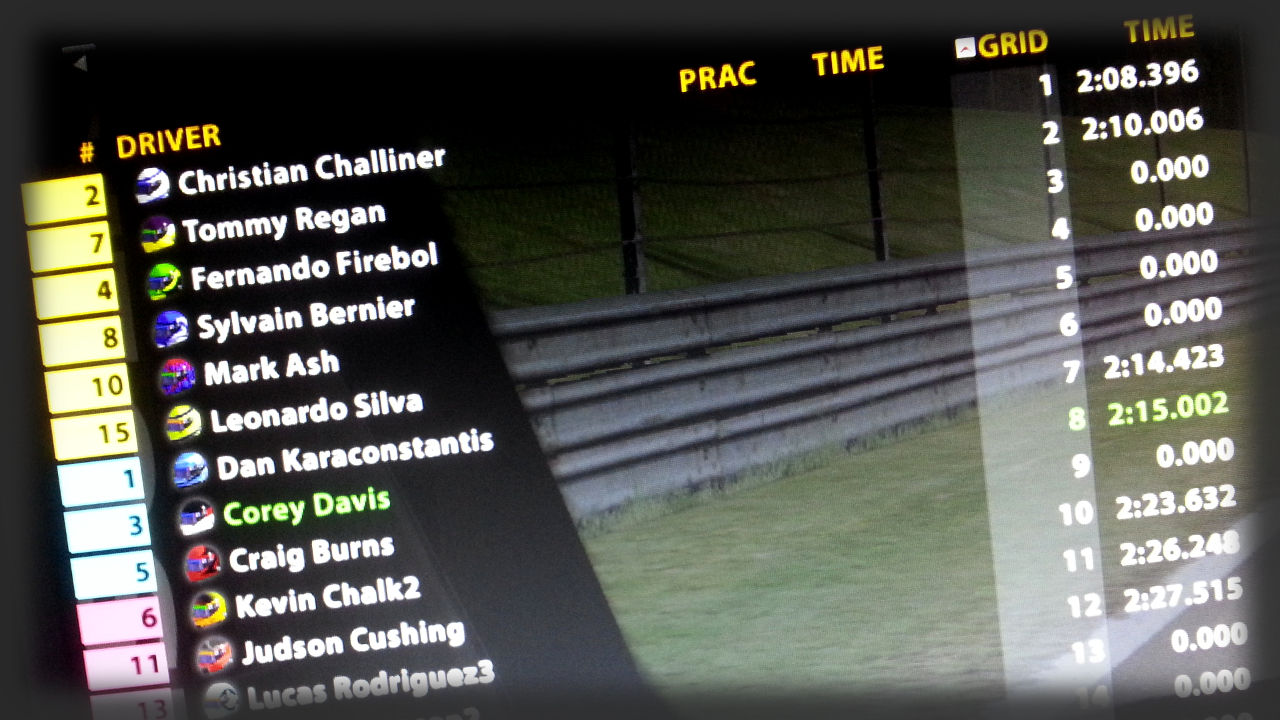
A qualifying time half a second faster than mine, plus a lower car number and therefore a higher iRating, told me my opponent was quick
Before the race even started, I knew one thing about my opponent: He was fast. That meant I would need a nearly mistake-free race to even keep up with him, because if I slipped, I would lose the draft and its advantage.
Once the green flag flew, I began to learn more about my opponent as I saw where each of us was strongest. In some ways, Monza is a simple and repetitive track. It basically has four straightaways separated by slower corners and chicanes. But the differences between myself and my opponent around the track were anything but redundant.
In the first two chicanes, we were basically even. In the next two corners — a pair of right-hand sweepers called the Lesmos — he tended to get great runs on corner exit and carry good speed down the next straightway. In the chicane that followed, his driving was somewhat erratic — aggressively jumping kerbs and kicking up dirt — but he carried excellent speed through there every lap, and a few times almost opened up a draft-proof gap as we hit the following straightaway.
Monza’s final corner is the Curva Parabolica, a diabolical right-hander that tempts you to carry in tons of speed but seems to fall away on exit. This corner was my one true advantage: The place where I was consistently quicker than my opponent. And being the final corner, it seemed like the perfect place to set up a winning move.
Play the Waiting Game
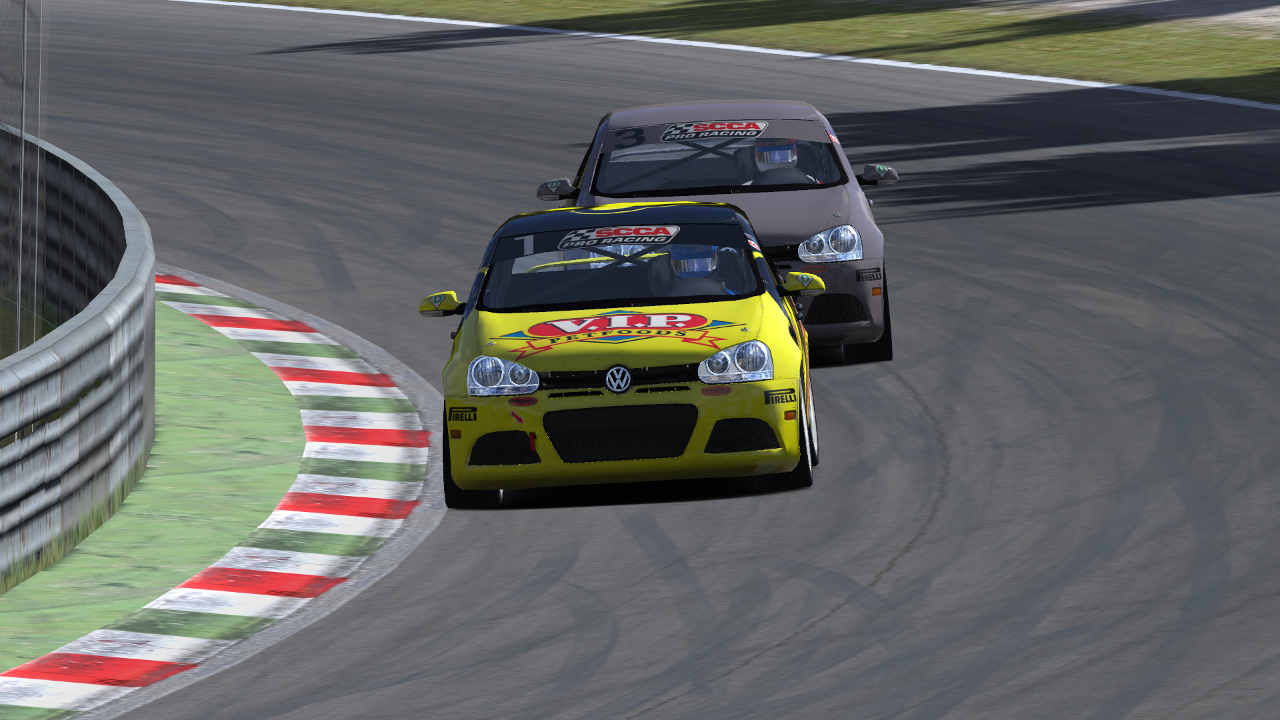
Tucked away in the draft through Monza’s Curva Grande
Even with a potential winning move in mind, I wasn’t about to try it before the final lap or two. In fact, for the first ten and a half laps of the 12-lap race, I didn’t make any moves. I just rode behind him, soaking up his draft and keeping his mirror filled with my gray Jetta.
Along with keeping your secrets safe until the end, that patient strategy can serve a few other purposes. For one, it keeps the pressure on the other driver, forcing him to look in his mirror as much as his windshield and increasing the likelihood that he’ll slip up. Also, in a multi-class race like this, your opponent can clear the way through traffic, giving him an extra worry that you don’t need to be as concerned with.
Sometimes, such extreme patience can even inspire paranoia for the other driver. “Is he just going to follow me all race? Will he ever make a move? Is he holding anything back?”
Of course, as Tom Petty sang, the waiting is the hardest part. Several times, I got great runs out of the final corner but ran half-throttle down the frontstretch to avoid passing him. As the laps wound down, it seemed so tempting to dart to his inside and just make the pass.
However, I couldn’t chance making a move too soon. Waiting isn’t always a surefire strategy, but in this case, it seemed like my only strategy.
Plan Ahead
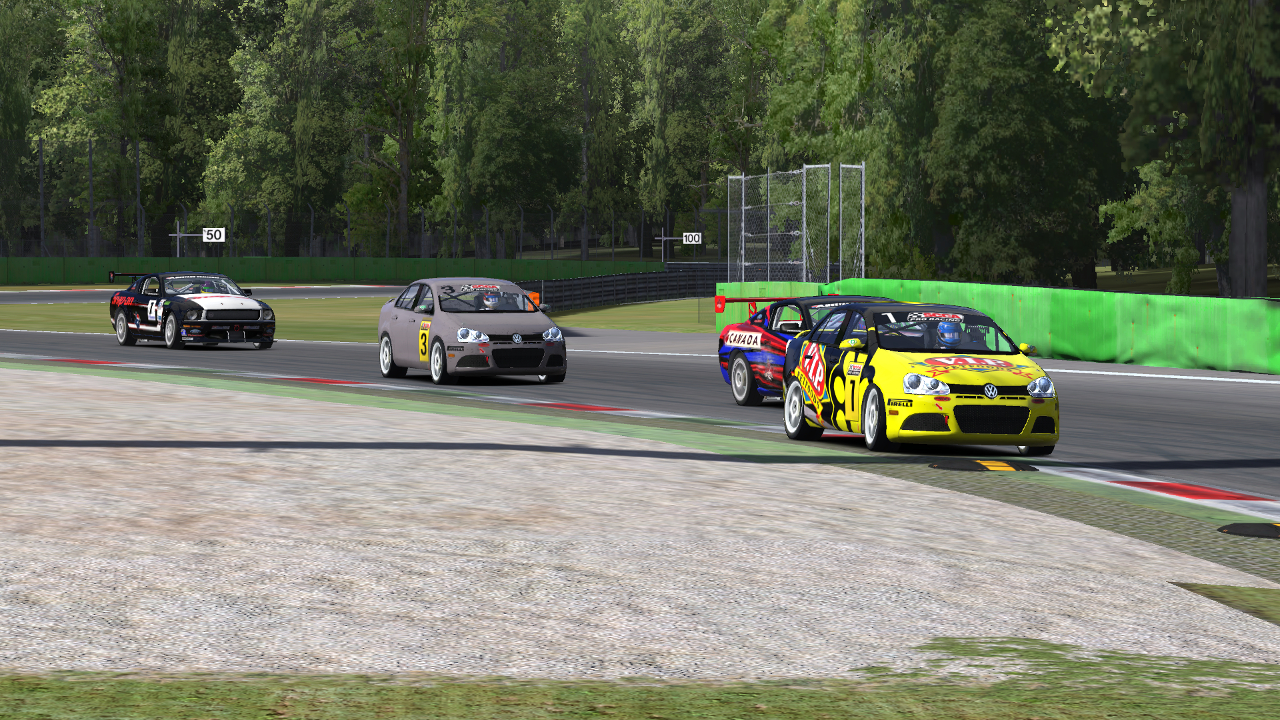
Mustangs on the move around us threatened to ruin my plan and my chances of winning
Growing up, I was always terrible at the game of checkers. Actually, I still am. And it’s because I just can’t see a few moves ahead to find the best strategy in the long run.
Fortunately in sim racing, my vision is a bit better. With about five laps to go in this race, I started planning when and where I might make my winning move.
The “when” was pretty easy to answer: It had to be on the last lap. Any sooner or I’d risk giving both the draft and mental advantage to my opponent.
As the race progressed, the “where” became easy to answer as well. I had the edge in the final corner, so I had to use it to either set up or make the pass.
In this race, though, there was a wrench thrown into my plans. A few Mustangs — which are faster in a straight line but often slower in the corners than the Jettas — had caught us from behind and were trying to pass us while engaged in their own battle.
A few times, one of the Mustangs got between my opponent and myself, which could have been disastrous. Fortunately, they slowed him down as much as they did to me. And I was able to use them as part of my plan.
Execute the Plan
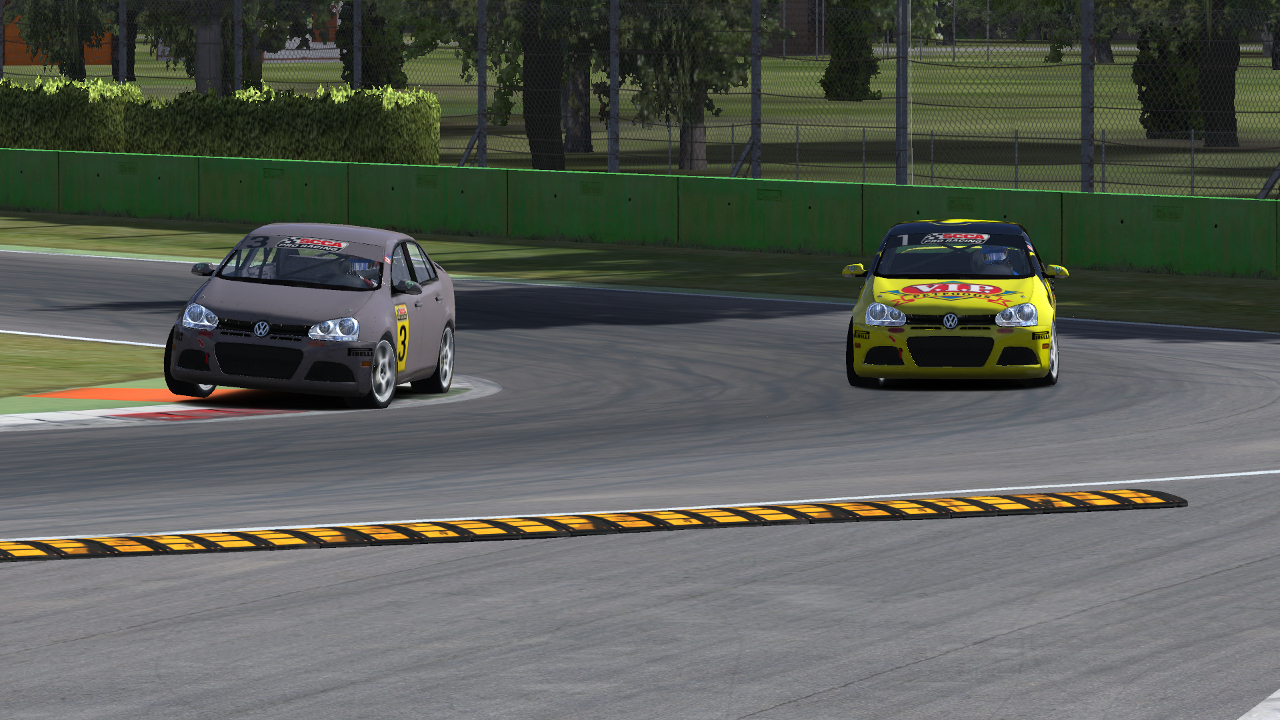
Completing the pass for the lead in turn 1 of the final lap
On the second-to-last lap, the pair of Mustangs was just ahead of us entering the final corner. I wasn’t close enough to my opponent to attempt a pass, but I saw a different opportunity. He would be slowed by the Mustangs mid-corner, so if I could get a better exit, I could set up a pass down the frontstretch.
And that’s exactly what happened. We took the white flag side by side, at one point going three-wide to lap a slower Pontiac Solstice. After playing the role of a conservative driver all race, I finally became a bold one, outbraking my opponent into the first chicane and taking the lead.
My winning move was completed as planned. But would I need to make another one?
Finish the Fight
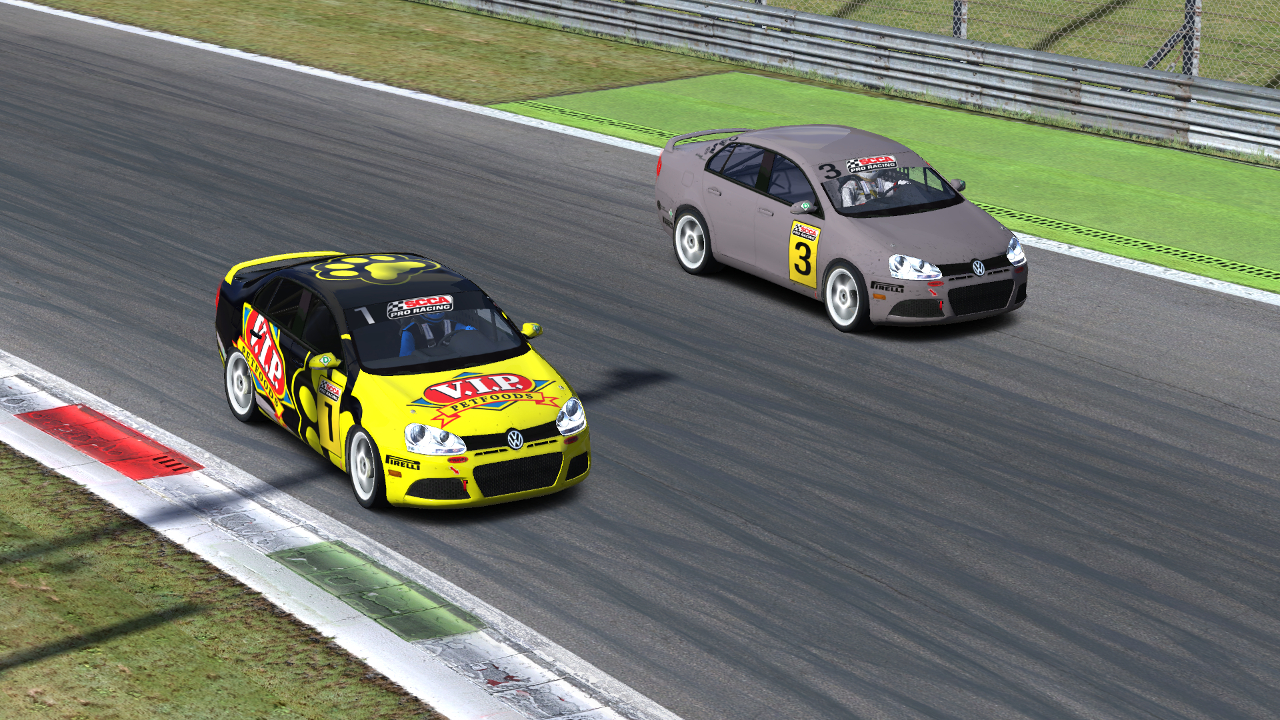
Side by side entering the final corner
For the rest of the final lap, I hit my marks and kept my opponent behind me, even as we approached his strongest section of the track with him in my draft.
As we headed down the final straightaway, it was clear that he would get enough draft to make a move into the final corner. So I had two options: I could take a defensive inside line, forcing him to the outside for that corner. Or I could give him the inside but try to pull a crossover move on corner exit.
With the knowledge that I’d been better in that corner all night using a conventional outside line on entry, and with the experience from the previous lap of getting a good exit, I chose the latter. I went outside and he went inside entering the braking zone. I braked slightly earlier than normal while he charged the corner. He surged ahead, but I got back to the gas sooner and pulled to his inside.
We were again side by side on the frontstretch, this time set up for the most exciting moment in racing: the photo finish.
Our Jettas hummed along at all of 110 mph, and as we approached Monza’s famous elevated victory lane and crossed the finish line, I had the edge. It was just 0.027 seconds — maybe a foot and a half in total — but that was enough. In this draft battle, I was victorious.
Here’s a closer look at the final lap and a half in all its strategic glory:
Maybe I was just lucky in that race. My strategy worked this time, but it probably wouldn’t have worked in some other cases. But in a draft-heavy race against a formidable opponent, your options will be limited. Screw up once, or give away your secrets too early, and your chances may be gone.
Your time may also be limited. In this race, I had 20 minutes to plan a winning move. You may find yourself with 10 minutes, or five, or in some cases, needing to make a split-second decision.
And there may be other complicating factors. In my race, it was a one-on-one battle for the win. You may have to fight multiple opponents, any of whom could lay waste to the best laid plans.
Those limitations aside, if this story proves anything, I hope it’s that drafting duels don’t have to come down to pure luck and aggression. Granted, they will still be stressful, frustrating, and often requiring a bold move to win. But armed with a good strategy, you can be smarter and better-prepared, which is a luxury in any race.
Footnote: After this race, I realized something interesting: I was wearing my shirt inside-out. That’s not a required part of your strategy, but if my race proved anything, it can’t hurt!
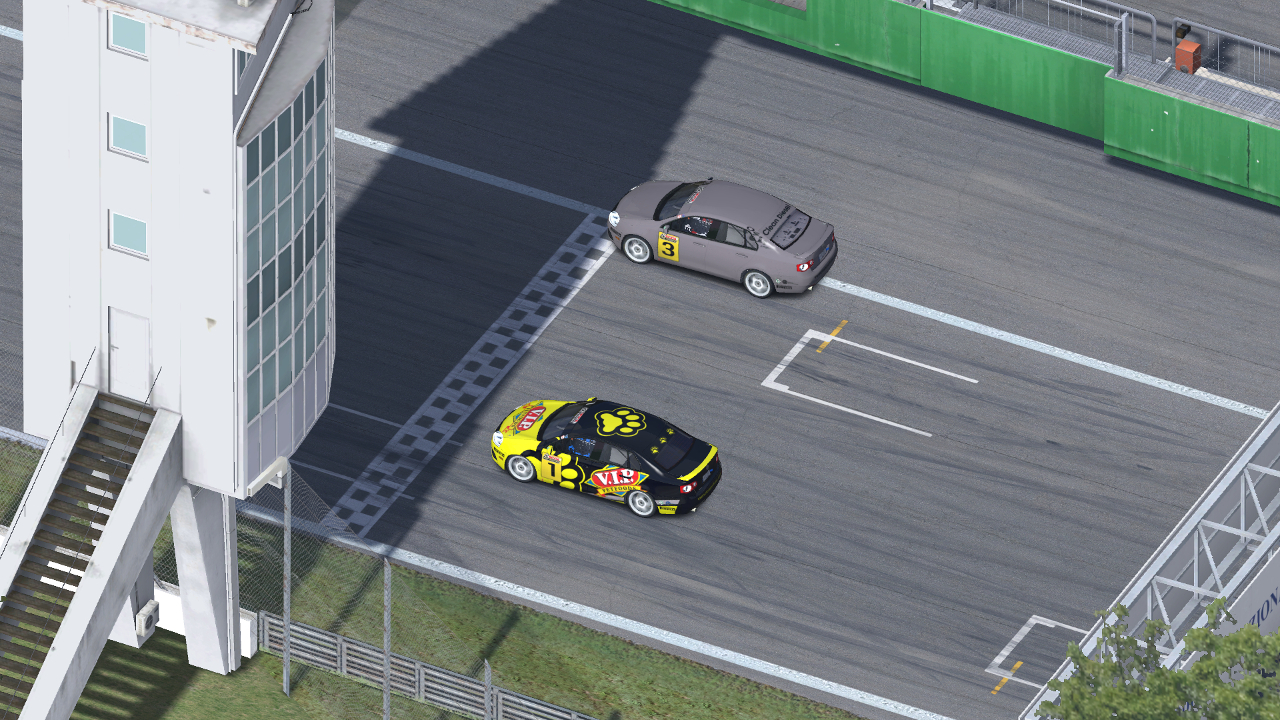
1 thought on “The Art of War and Drafting”
Comments are closed.